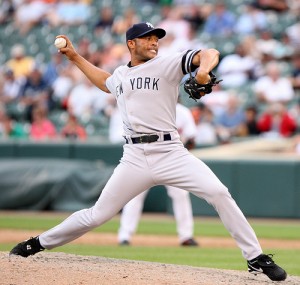Latino MLB Players: Few Starting Pitchers Or In Commercials
 So there was no boycott after all, no commerce-affecting protest, no fan movement, no player statement (at least none that pierced the media bubble).
So there was no boycott after all, no commerce-affecting protest, no fan movement, no player statement (at least none that pierced the media bubble).
The 2011 Major League Baseball All-Star Game game went on at Chase Field in Phoenix and all that remains are the statistics: the National League beat the American League 5 to 1; the NL pitchers dominated the AL hitters; Prince Fielder hit a soaring three-run homer and home-field advantage will go to the NL champion in the World Series.
Aside from that, it’s done and gone.
All the speculation and all the calls for a boycott didn’t produce the hoped-for result. But curiously, because baseball is a game of statistics, it left us with some interesting numbers about the role of Latino players in pro baseball’s “big tent.”
We’ve reported on the number of Latinos in the MLB: 20% of the names on the rosters of all MLB teams are Latino and Latinos buy the tickets that fill the stands and make millions of dollars for the owners. And something else we know is that some of the most famous Latino players are and have been relief pitchers.
Aside form a few stand-outs that will be in the record books for the ages, Fernando Valenzuela with his speed-changing fastball or Luis Tiant with that crazy wind-up (did I just date myself?) come to mind, there have been very few Latino starting pitchers in the major leagues.
I don’t think too many people had noticed. But all this ruckus over the boycott of the all-Star game sent some folks digging in the stats. Baseball Nation was one of them:
It seems that foreign players — primarily from poorer, Spanish-speaking countries — have a harder time establishing themselves as big-league starters.
Are we picking nits here?
The Baseball Nation makes a point.
Over the past three years the rate of foreign-born relief pitchers has fluctuated between 26% and 32% while the rate of foreign-born starters has held steady at almost exactly 20%. The gap between the figures seems real, and relatively stagnant. And it is a gap that demands some explanation.
The point is that conventional baseball wisdom holds that what separates starters from relievers is not their arsenal of power pitches (what aficionados call a pitcher’s “stuff”), but their mental and strategic capacities. It has been a decades-old stereotype. Again, Baseball Nation:
In the most recent issue of Sports Illustrated, baseball historian Luis Mayoral told SI’s Austin Murphy, “Back then, the mentality was: Latinos are equipped to play defense — predominantly the infield. Latinos cannot be catchers or pitchers because they’re not smart enough. Teams didn’t come out in the open with it, but they had their quotas.”
Does that hold today? Does it matter?
And what about this: Hispanically Speaking recently raised the question about Latino baseball players and commercial endorsements. With all the money to be made pitching products as well as baseballs Latinos are noticeably absent from TV commercials and print ads. The explanation seems to be that Latino baseball players don’t easily connect with the fans because most of them speak with accents and a sales pitch requires clarity.
The only challenge for some is their command of English. Adding, “Fans want to feel a connection to their favorite players, and eliminating a language barrier significantly accelerates that bonding.”
However it’s not always hesitation on the part of advertisers. Sometimes players are the one slow to accept endorsement deals.
Does it matter when Albert Pujols makes only $8 million in endorsements? It might when there’s five times that much to be made.
Then again, when Albert Gonzalez signs with the Red Sox for more than $100 million, it’s hard to break a sympathy sweat.
Follow Victor Landa on Twitter: @vlanda
[Photo by Keith Allison]

